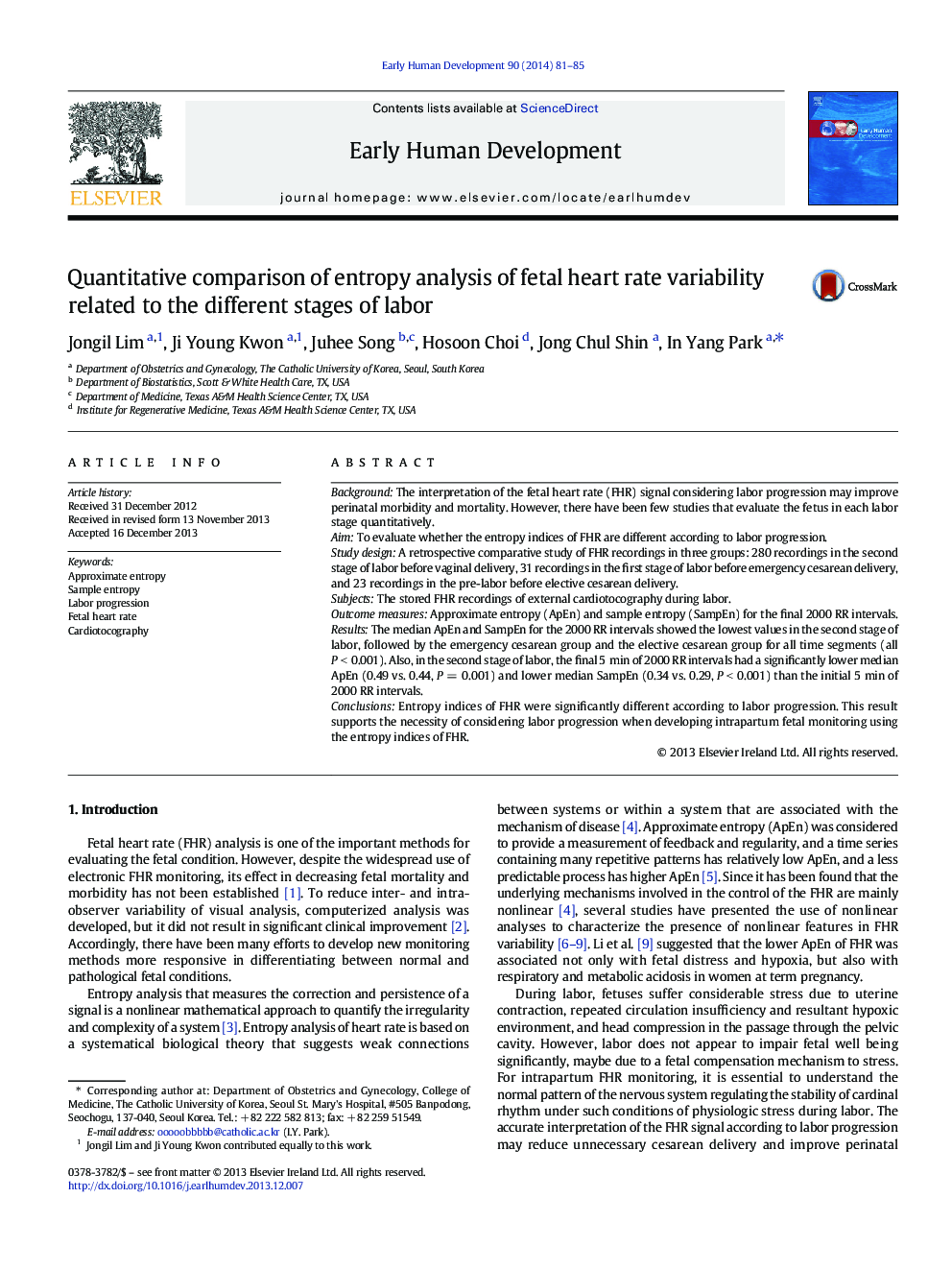| Article ID | Journal | Published Year | Pages | File Type |
|---|---|---|---|---|
| 3916566 | Early Human Development | 2014 | 5 Pages |
BackgroundThe interpretation of the fetal heart rate (FHR) signal considering labor progression may improve perinatal morbidity and mortality. However, there have been few studies that evaluate the fetus in each labor stage quantitatively.AimTo evaluate whether the entropy indices of FHR are different according to labor progression.Study designA retrospective comparative study of FHR recordings in three groups: 280 recordings in the second stage of labor before vaginal delivery, 31 recordings in the first stage of labor before emergency cesarean delivery, and 23 recordings in the pre-labor before elective cesarean delivery.SubjectsThe stored FHR recordings of external cardiotocography during labor.Outcome measuresApproximate entropy (ApEn) and sample entropy (SampEn) for the final 2000 RR intervals.ResultsThe median ApEn and SampEn for the 2000 RR intervals showed the lowest values in the second stage of labor, followed by the emergency cesarean group and the elective cesarean group for all time segments (all P < 0.001). Also, in the second stage of labor, the final 5 min of 2000 RR intervals had a significantly lower median ApEn (0.49 vs. 0.44, P = 0.001) and lower median SampEn (0.34 vs. 0.29, P < 0.001) than the initial 5 min of 2000 RR intervals.ConclusionsEntropy indices of FHR were significantly different according to labor progression. This result supports the necessity of considering labor progression when developing intrapartum fetal monitoring using the entropy indices of FHR.
